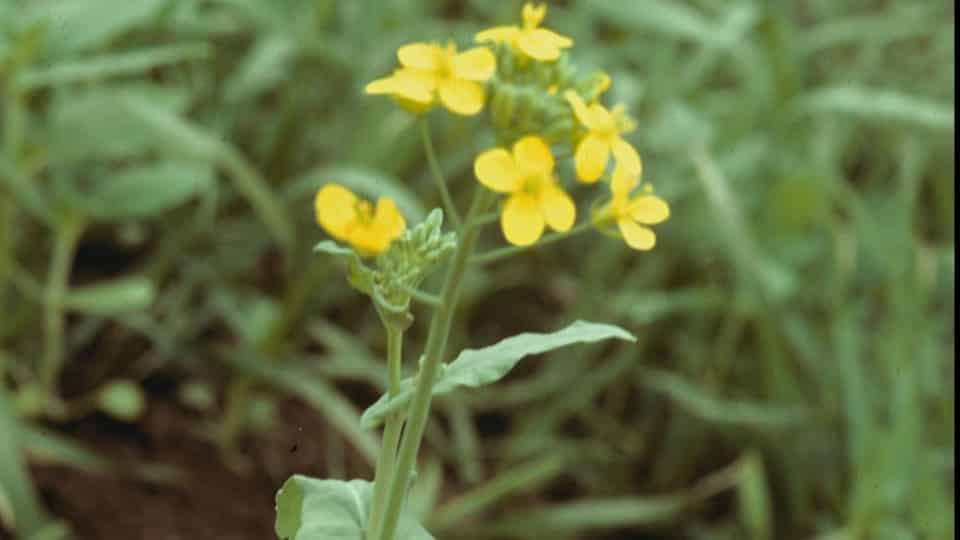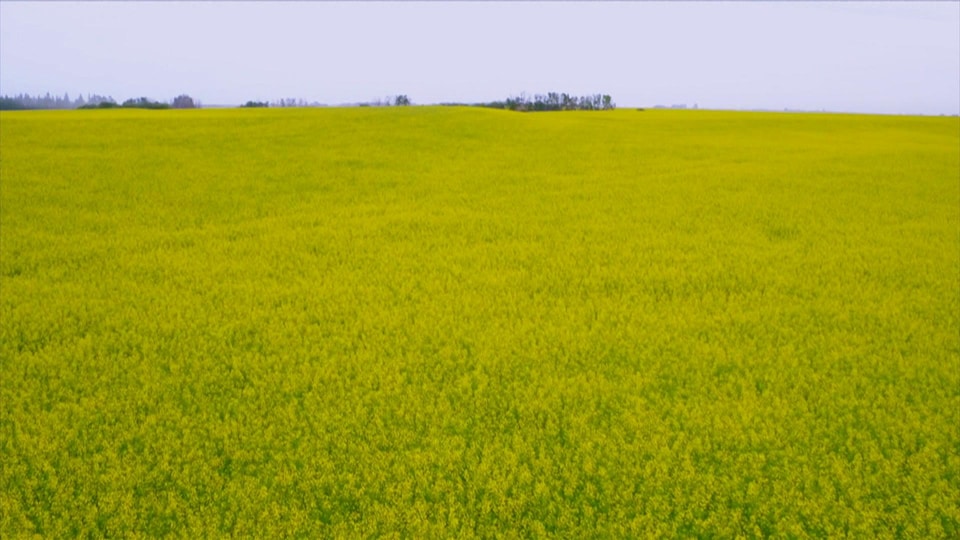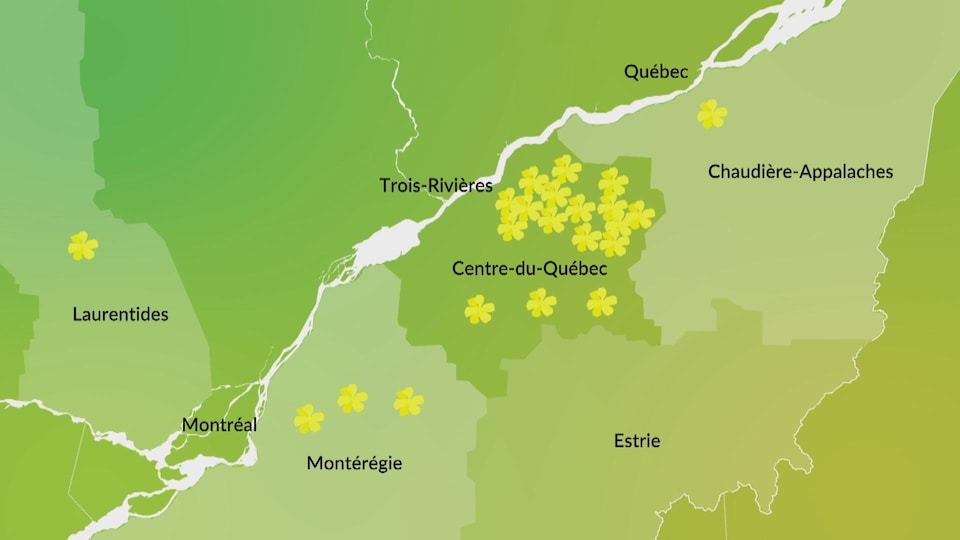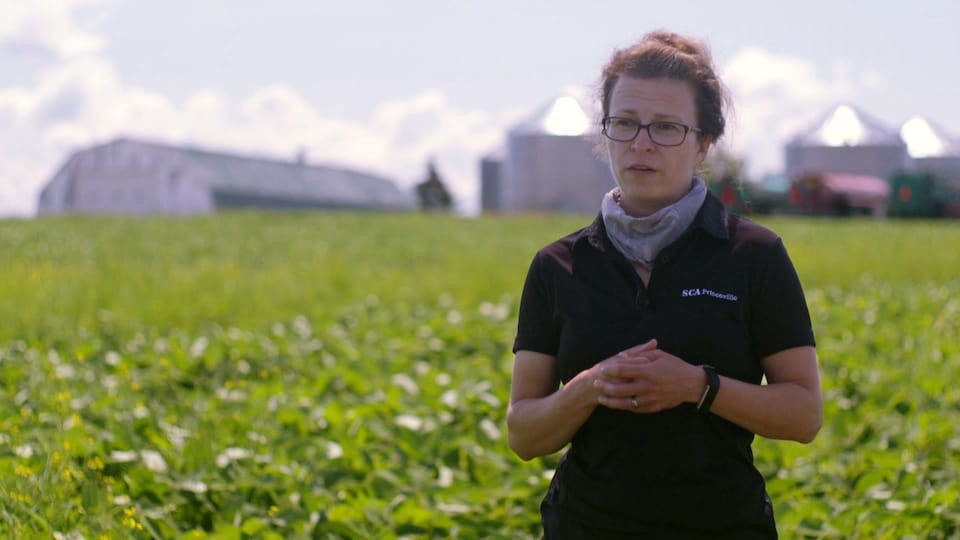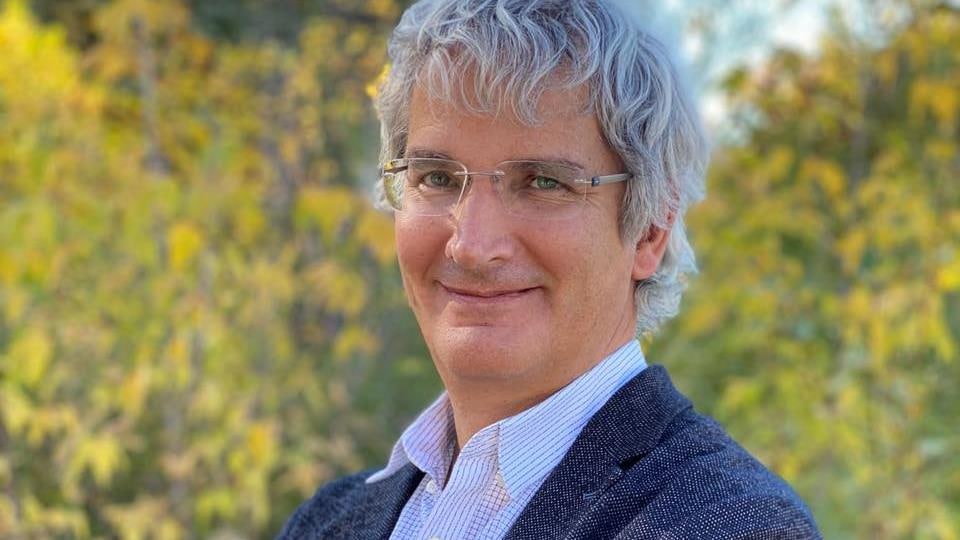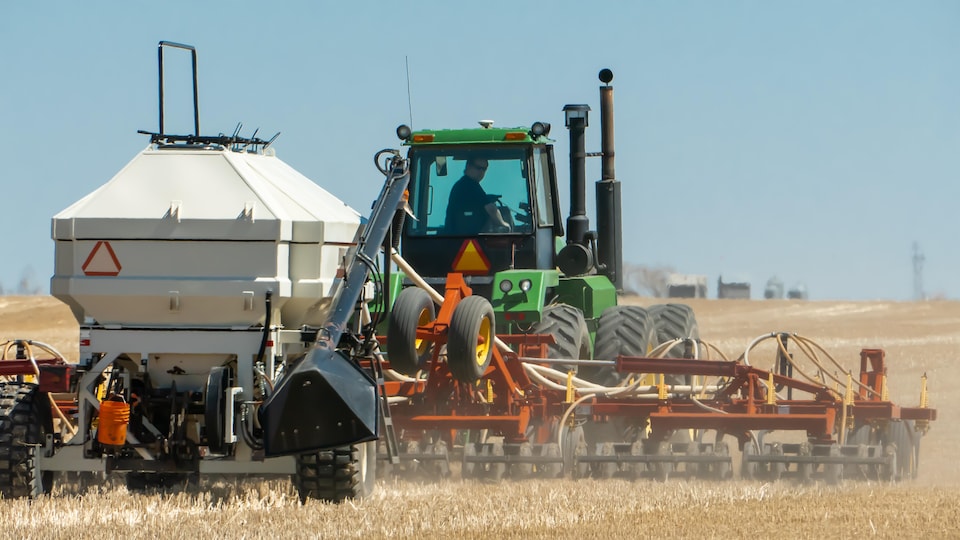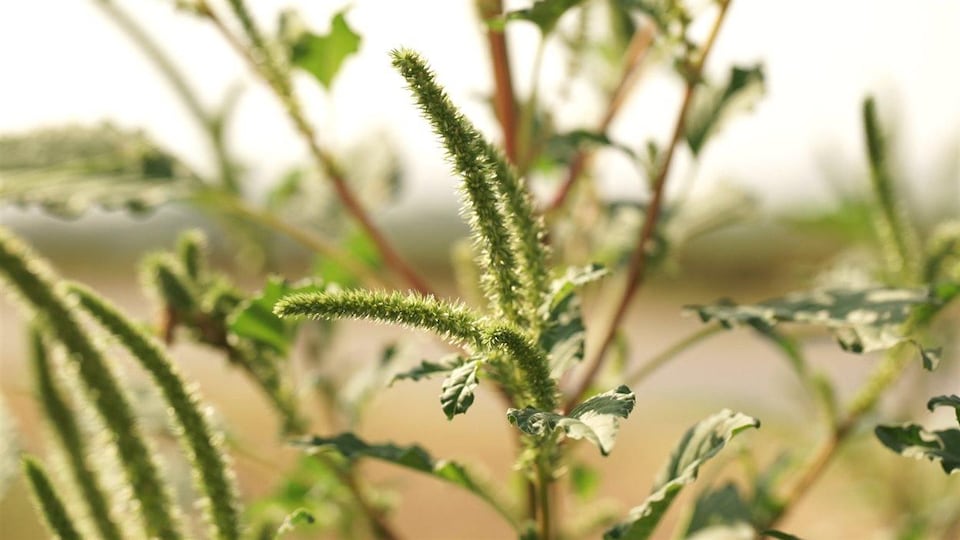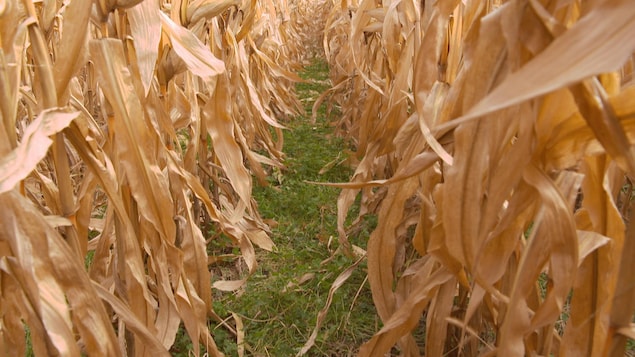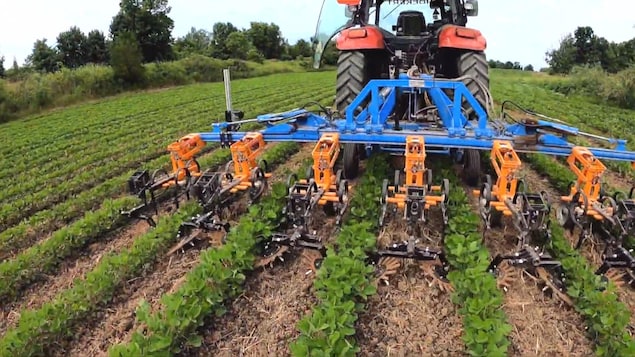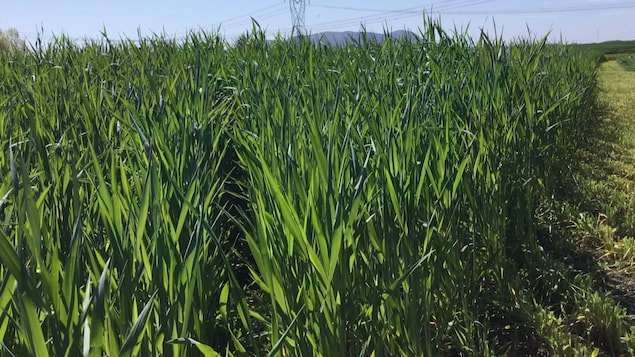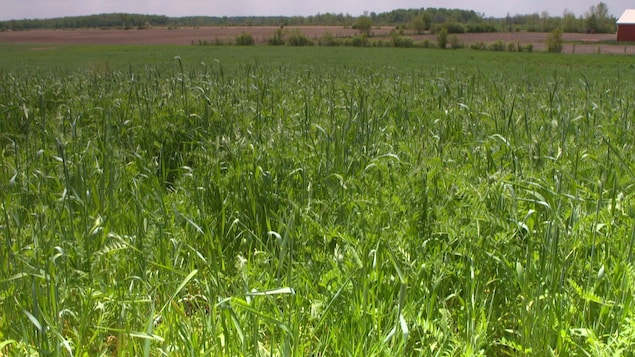Producer Raphaël Vachon first noticed the problem in 2015. After our watering passes, the mustard remained there. With the years […] the small circle of twenty feet has grown.
The plant piqued the curiosity of agronomist Isabelle Bernard. In 2017, she sent leaf samples to the MAPAQ Phytoprotection Expertise and Diagnostic Laboratory.
” It was there that they discovered that the plant was resistant to glyphosate. Not a resistance that develops through misuse, repeated use of a product, but a gene that was in the canola that transferred into the mustard of the birds. So it’s like a GMO weed. »
Bird mustard, a wild plant, looks just like another plant grown extensively in Canada: canola. In the mid-1990s, Monsanto obtained the green light to market transgenic canola in Canada.
RoundUp Ready canola, as it is called, has been genetically engineered to tolerate glyphosate-based herbicide sprays. When you spray the product, all the weeds die and the canola survives.
Bird mustard at the Givany Farm behaves in exactly the same way. If we only apply glyphosate, it doesn’t matter: it is totally resistant, it has the resistance gene
explains Isabelle Bernard.
Since the two plants are close relatives, canola can easily pollinate bird mustard.
In Quebec, in 2005, the first case of bird mustard was identified which had integrated the glyphosate resistance transgene. It was in the Chaudière-Appalaches region. Today, 30 populations of this weed are known, especially in Centre-du-Québec, a region where little canola is grown.
Even farmers who have never planted canola find themselves with the transgene from this crop at home. Mustard takes the place of soy, illustrates Raphaël Vachon, it suffocates the plants and when it suffocates the plants, there is less yield.
Unlike tuberous pigweed, there is no financial support for farmers struggling with bird mustard. For Isabelle Bernard, who sees more and more bird mustard in the fields of her region, the situation is worrying: There, we have images of a field that has lines with a little mustard, but imagine this same field, if there was mustard all over the field, it would cause serious yield losses.
Who is responsible?
Ironically, the intellectual property of the glyphosate tolerance gene has already been the subject of a long legal battle. In 2004, after years of lawsuits, the highest court in the land ruled in favor of Monsanto in its lawsuit against a Saskatchewan farmer. The agrochemical giant accused Percy Schmeiser, a farmer, of having grown transgenic canola without having paid the royalties linked to the use of the seeds.
The farmer has always maintained that his fields had been accidentally contaminated, among other things, by genetically modified canola pollen carried by the wind. Very fine, this pollen can travel several kilometres.
While these same genes are found in plants that harm farmers today, one wonders if they are still proprietary to the manufacturer.
A professor at the Institute of Environmental Sciences at UQAM, Élisabeth Abergel worked for many years in the pharmaceutical and biotechnology industries. She is categorical: Developers should continue to be responsible for these products when they start to leak and when there is genetic contamination.
Percy Schmeiser’s lawyer, Terry Zakreski, also believes that Bayer, which bought Monsanto in 2018, has a responsibility. Should the company clean all this up? Of course she should. The problem is getting a court to order him to do so!
One of the problems he raises is that the rights claimed by the companies are intellectual property rights, they are not physical property rights. The company claims the right to reproduce [les semences]to profit from it, but it does not claim ownership of the physical object, wherever it appears […]
In 1995, the Canadian Food Inspection Agency (CFIA) authorized the commercialization of genetically modified canola seeds. Its risk assessment report was based on documents provided by Monsanto. Already at the time, the CFIA was considering the possibility of canola hybridizing with wild plants, which would in turn become tolerant to glyphosate. But the report concluded that this would not aggravate […] the invasiveness of these [mauvaises herbes] (New window)
.
According to lawyer Terry Zakreski, the fact that the government allowing release into the environment really gives the company a defense. […] Once this authorization is given, it is very difficult for someone to sue the company.
.
The Bayer company did not want to comment on the ownership of the transgene found in bird mustard among Quebec farmers. In an exchange of emails, one of its representatives, however, invited growers struggling with this resistant weed to contact Bayer.
The vicious circle of herbicide use
To circumvent the problem of resistance, the industry has been proposing for some years new seeds genetically modified to tolerate more than one herbicide. This technique is called gene stacking.
In seed catalogs, we can now choose crops that tolerate both glyphosate, for example, and other much more toxic herbicides, such as dicamba, or even 2-4D, one of the active molecules of Agent Orange used as a defoliant in the Vietnam War.
But while developing these new seeds can take ten years, some weeds are already resistant to this cocktail after just five years. We can stack genes with varieties that are tolerant to five herbicides, explains Elisabeth Abergel, but at some point, when these five herbicides will no longer have any effect, we will have to find even more toxic molecules. So it’s really not the solution, it’s not sustainable.
” We know what to do to avoid having resistant weeds. It takes a rotation, it takes diversified agriculture as much as possible. If we stay in an agriculture that is simplified, nature will catch up with us. It’s a question of time. »
Possible solutions
All the specialists consulted agree. To curb resistance to herbicides, we must bring biodiversity back to the fields and no longer depend solely on chemicals to control weeds.
This means, among other things, not growing only corn and soybeans. These two plants are very profitable and are by far the two most widely grown in the province. But these monocultures contribute to accelerating the phenomenon of resistance.
Agronomist Stéphanie Mathieu, in Montérégie, reminds us of the importance of getting out of the corn-soybean rotation. Corn and soybeans are plants that are sown at the same time, that have the same spacing, that have very similar life cycles. And we work with the same herbicides too
. It is easy in this context for weeds, subjected to the same products year after year, to develop resistance.
Adding cereal to the rotation is a great solution. They quickly cover the ground in the spring, which prevents weeds from taking root. And since they are harvested earlier than corn and soybeans, harvesting also cuts down the weed before it can go to seed.
Between green manure, intercropping, hay… there is no shortage of solutions for occupying the soil and controlling weeds other than with chemical treatments alone. And we will now have to stay on the lookout, because the era of simple and quick solutions promised by herbicides is well and truly over.
” If we don’t question why there are such types of weeds in our fields and if we don’t take an interest in them, we will multiply the problem very, very quickly. Whether it’s for weeds or insects or diseases, you have to know the fields. You have to know who you’re dealing with. »
The report by Catherine Mercier and André Raymond is broadcast on the program green week Saturday at 5 p.m. and Sunday at 12:30 p.m. on ICI TÉLÉ. At ICI RDI, it will be Sunday at 8 p.m.
Reference-ici.radio-canada.ca
